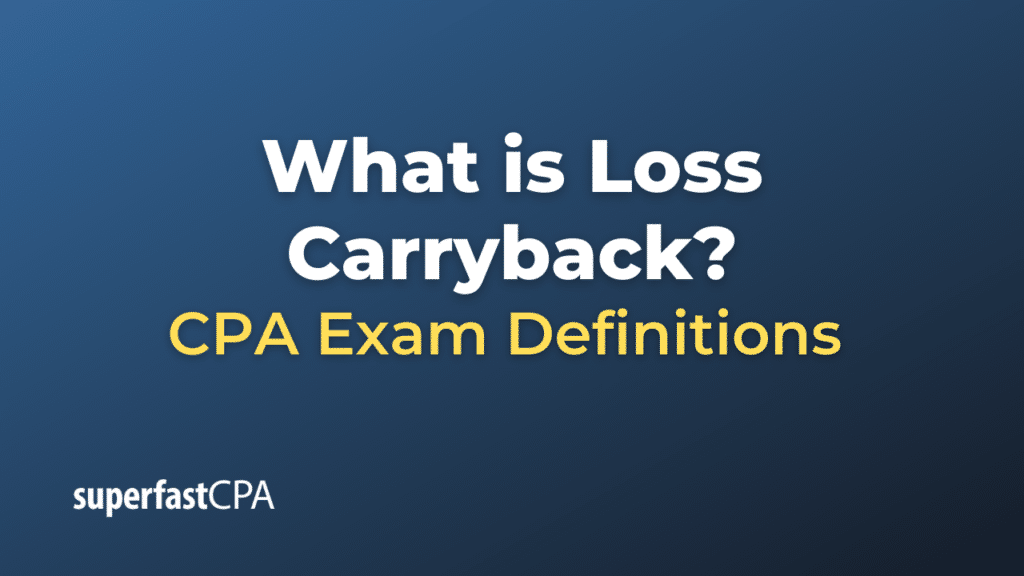Loss Carryback
Loss carryback, also referred to as a tax loss carryback, is a provision that allows a business to apply a net operating loss in a certain year to a previous year’s income. This typically results in a tax refund because the company overpaid tax in the previous years relative to its updated taxable income.
The purpose of this provision is to help companies that have had a bad year recover some of their prior years’ tax payments, providing them with much-needed liquidity. It’s particularly beneficial for businesses with fluctuating incomes from year to year, as it allows them to smooth out their tax liabilities.
The rules regarding loss carrybacks vary by jurisdiction. For example, as of my knowledge cutoff in September 2021, in the United States, the Tax Cuts and Jobs Act (TCJA) of 2017 initially eliminated loss carrybacks for tax years starting after 2017. However, the CARES Act of 2020 temporarily reintroduced the provision to allow businesses to carry back losses incurred in 2018, 2019, and 2020 for up to five years to help businesses suffering during the COVID-19 pandemic.
Please consult a tax professional or updated resources for the most current regulations and procedures as they can change with new legislation and vary across countries.
Example of Loss Carryback
Let’s consider a hypothetical company named “TechCo.”
Let’s say that in 2023, TechCo made a profit of $2 million and paid 25% tax on this income, amounting to $500,000. However, in 2024, due to market downturns and increased competition, TechCo incurred a net operating loss of $800,000.
Assuming the tax rules in TechCo’s jurisdiction allow for a loss carryback, TechCo could apply the $800,000 loss from 2024 to its 2023 income. This would effectively reduce its 2023 taxable income from $2 million to $1.2 million.
TechCo had originally paid $500,000 in tax on the $2 million income. However, the revised taxable income of $1.2 million would have only required a tax payment of $300,000 (25% of $1.2 million). Therefore, TechCo would be eligible for a tax refund of $200,000 ($500,000 original tax – $300,000 revised tax).
This refunded amount would provide TechCo with extra cash flow, which could be very helpful in offsetting the effects of the poor financial year they had in 2024.
Again, it’s important to note that tax laws vary by country and can change over time, so always consult with a tax professional for the most accurate information.














